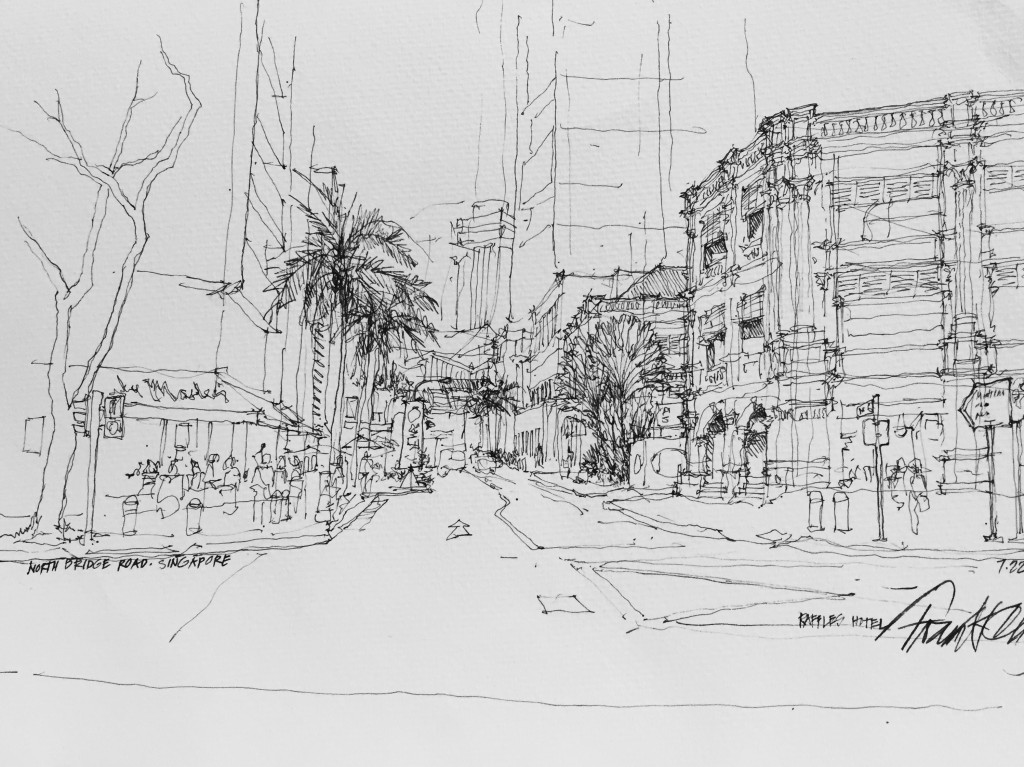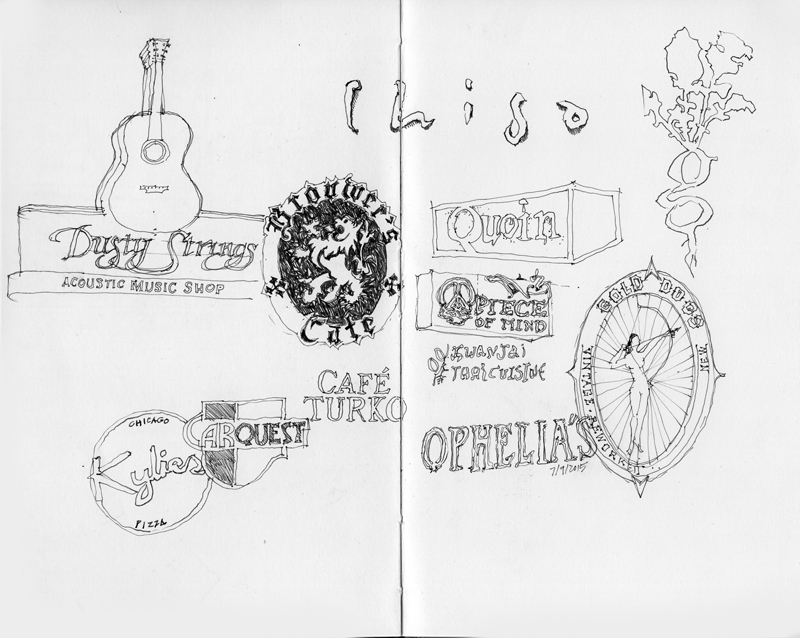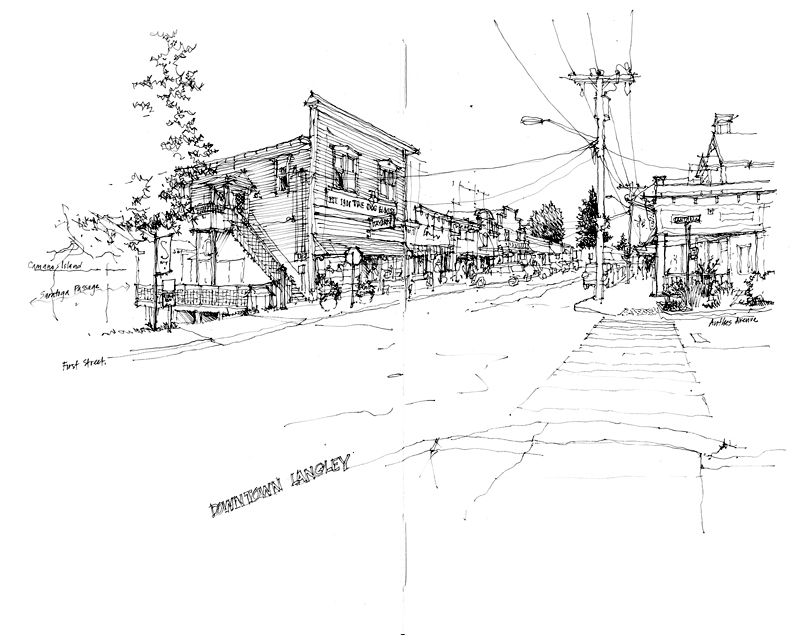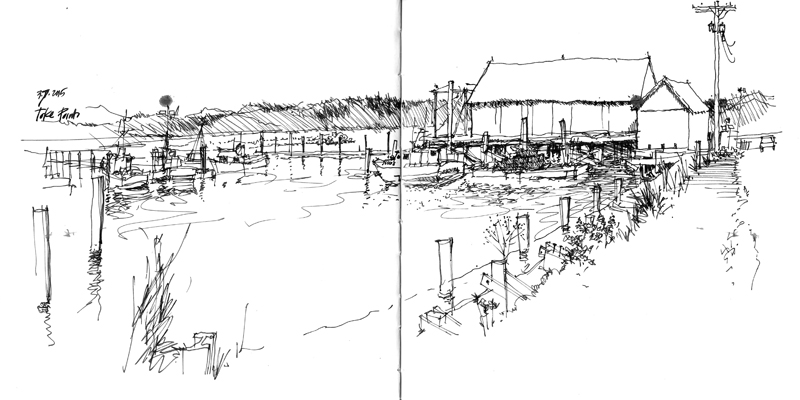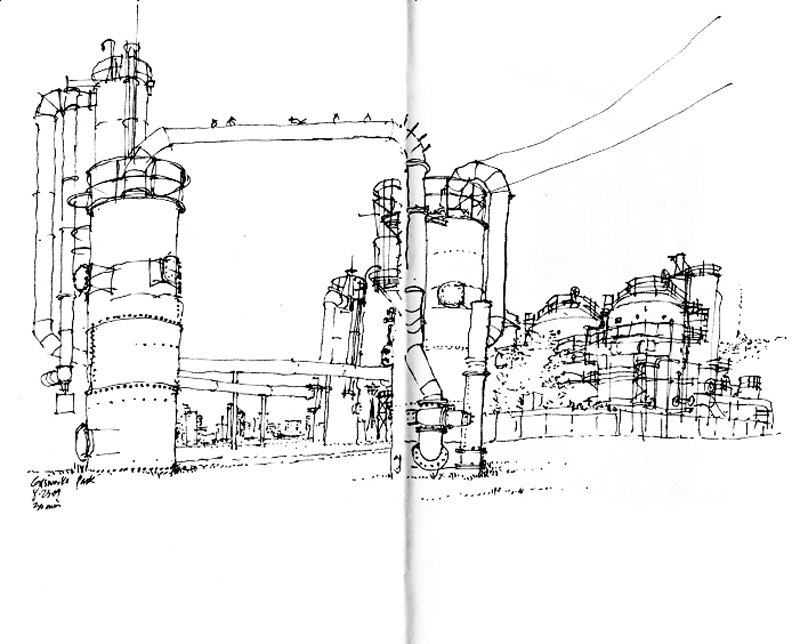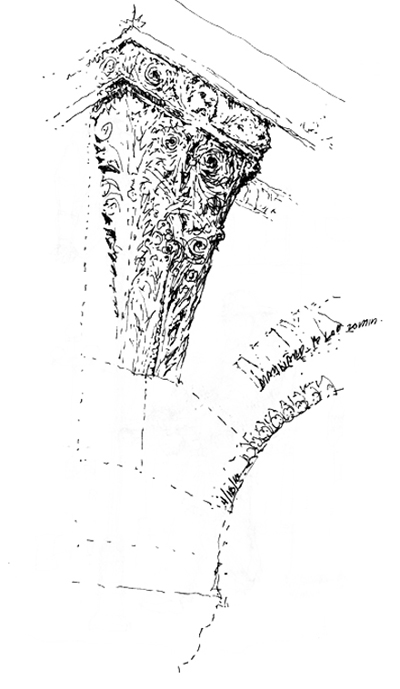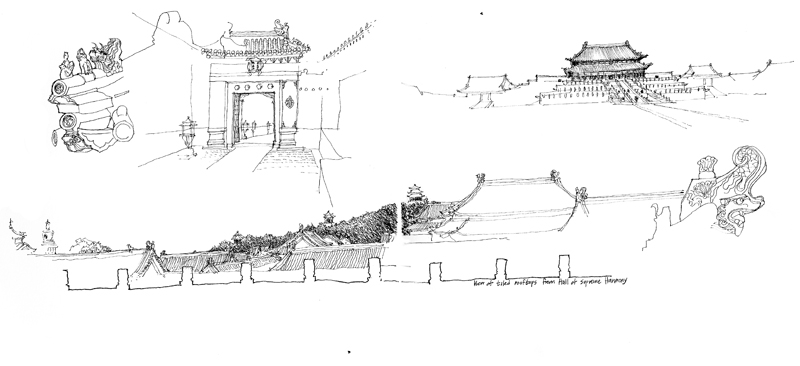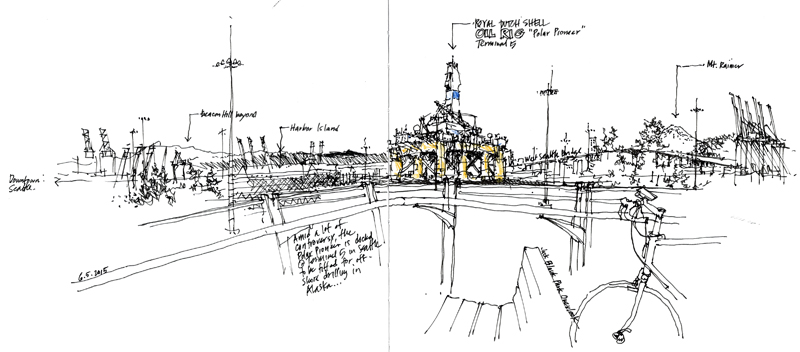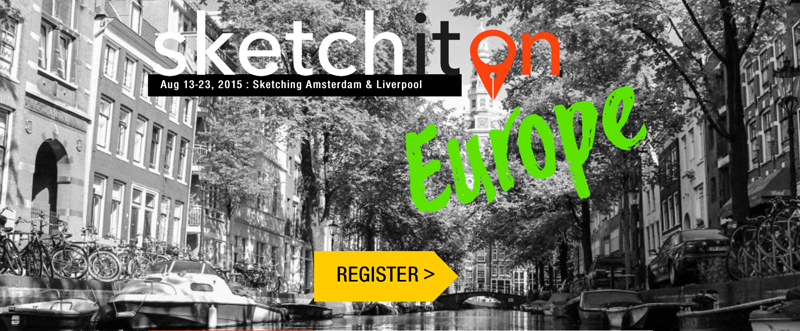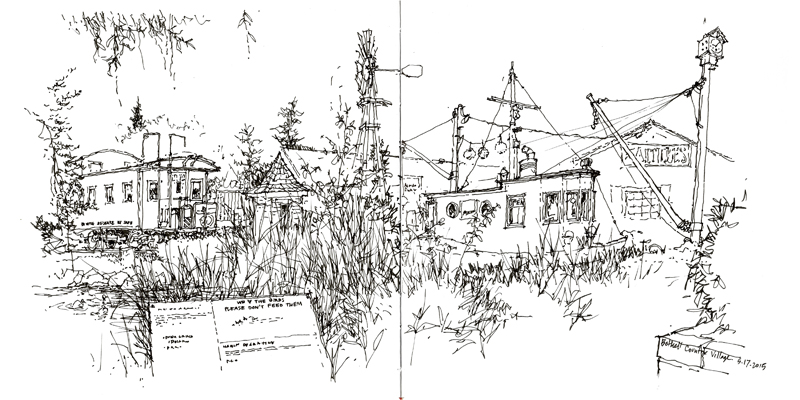An ad hoc group of Seattle Urban Sketchers met this morning at the Kubota Garden in the Rainier Beach neighborhood of Seattle. Fujitaro Kubota purchased the five-acre parcel of swampland in 1927 and proceeded to clear the land, dig several ponds, and create a spectacular landscape merging Japanese design techniques with North American materials. As the now 20-acre garden was threatened by developers, the Seattle Landmarks Preservation Board designated the garden a Historical Landmark in 1981. The City of Seattle acquired the grounds in 1987, which is now stewarded by the Kubota Garden Foundation.
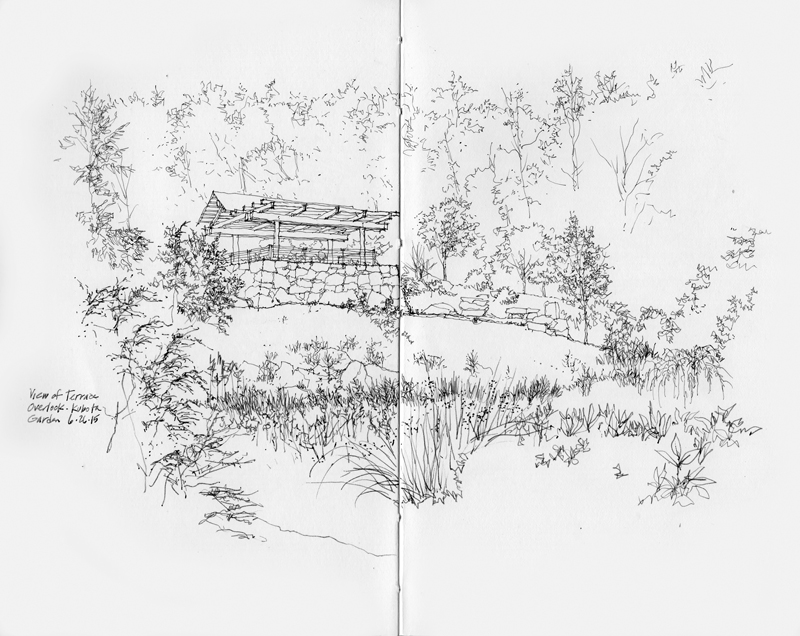

These two views is of the latest addition to the garden, the Terrace Outlook, the base of which was constructed by the Awatas, a 15th-generation family of Japanese artisan stone masons, along with a host of volunteer workers. Drawing a view dominated by landscaping and plant materials with a fountain pen requires paying attention to the various textures of the plant materials and using patterns of light and dark shapes to create implied layers of depth.
One could spend an entire day sketching in the Kubota Garden and so I plan on returning to capture more views.

